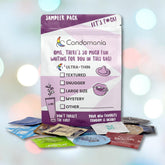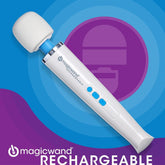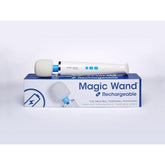Is there a significant difference between latex and non-latex condoms?
Yes, there is. And you should have an idea of the difference when buying condoms.
But, the truth is that when it comes to condoms, people often have more questions than answers. While the condom must be effective, you can’t forget the overall experience.
Nobody wants to get a rash from something that’s supposed to be pleasurable!
So, what’s the best material for a condom?
We’ll put the two types head-to-head.
In one corner, we’ve got traditional latex condoms.
In the other: non-latex condoms.
Ready for this latex vs. non-latex condom showdown? Let’s dive into all of the intimate details.

Latex vs. Non-Latex Condoms Overview
When you shop for condoms at the store, you’ll see many latex varieties.
This material has become standard over the years, but it may not work for everybody.
Pros of Latex Condoms | Pros of Non-Latex Condoms |
| Generally, they’re better at preventing sexually transmitted infections. | These are great alternatives for people with latex allergies. |
| Latex condoms are incredibly flexible, so they don’t slip and break easily. | Many non-latex condoms conduct more heat and quickly adjust to body temperature. |
| They’re more affordable than non-latex condoms. | Many people think non-latex condoms feel more natural. |
Types of Non-Latex Condoms
Latex is one of the most well-known condom materials, but it’s definitely not the only option.
If you’re allergic to latex or just want something more comfortable, you may consider switching to non-latex condoms.
Here are the 3 most famous varieties...
1. Polyisoprene Condoms
Made of rubber, polyisoprene condoms are also good options for folks with latex allergies.
They feel stretchy and breathable, and they help prevent pregnancy and STDs.
However, polyisoprene condoms have a slightly higher price point, and some of them are much thicker than other varieties.
Featured Polyisoprene Condom: Skyn Original Condoms
LifeStyles SKYN Original Condoms (Latex-Free)
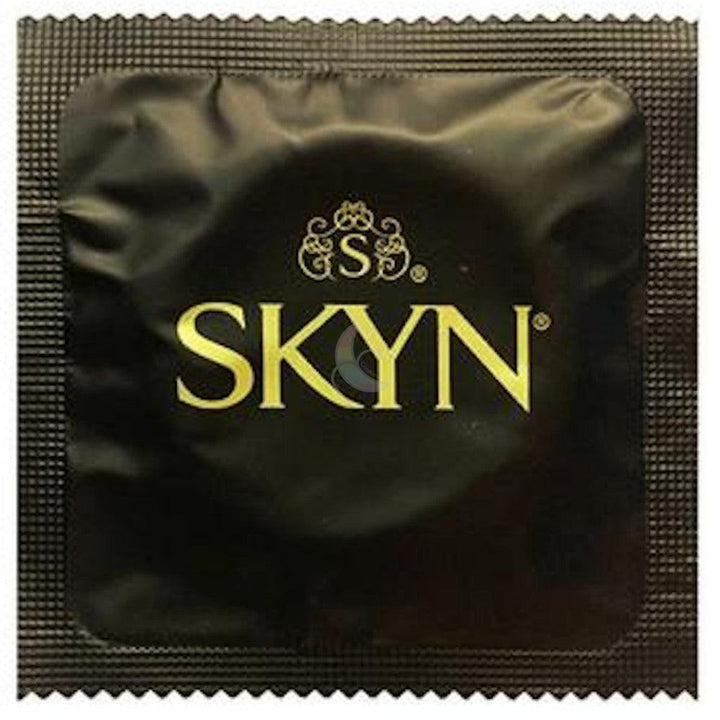
$9.99
$12.99
LifeStyles Skyn Condoms LifeStyles Skyn latex-free condoms were made for people with latex allergies. But then something unexpected happened. Skyn started selling like crazy to condom users across the spectrum. Skyn polyisoprene condoms bring a new level of closeness to… Read More
2. Polyurethane Condoms
Polyurethane condoms are made from plastic and help protect against pregnancy and STDs.
They’re stronger than latex condoms, so they are more durable in storage.
Polyurethane condoms can be great options for people allergic to latex, but they have some drawbacks.
First of all, polyurethane condoms fit looser than latex condoms, so you risk having one slip off during sex.
They’re also stretchier than other varieties, so their chances of breaking are higher.
Featured Polyurethane Condom: Trojan Supra BareSkin Condoms
Trojan Supra Bareskin Condoms

$5.99
$7.99
Trojan Supra Bareskin Condoms Get all the thinness of BareSkin™ without the latex. Supra™ condoms are all about sensitivity in more ways than one. Their design transmits natural body heat and provides a barely-there sensation while also protecting those who… Read More
3. Lambskin Condoms
Also known as natural condoms, lambskin condoms don’t contain synthetic materials. But don’t be fooled by the name!
These condoms don’t actually contain lamb’s skin. Instead, they’re made from a lamb’s large intestinal pouch braided pieces.
Many people prefer lambskin condoms because they transmit body heat better than latex condoms and enhance the overall sensation. Some say they even feel more natural!
Before you add them to your cart, you should know one important thing – lambskin condoms don’t protect against sexually transmitted diseases like chlamydia and HIV.
That’s because lambskin condoms are too porous. They prevent sperm from escaping through the barrier, but some fluid can still seep through. So, be careful.
Featured Lambskin Condom: Trojan Naturalamb
Trojan Naturalamb Latex-Free Condoms
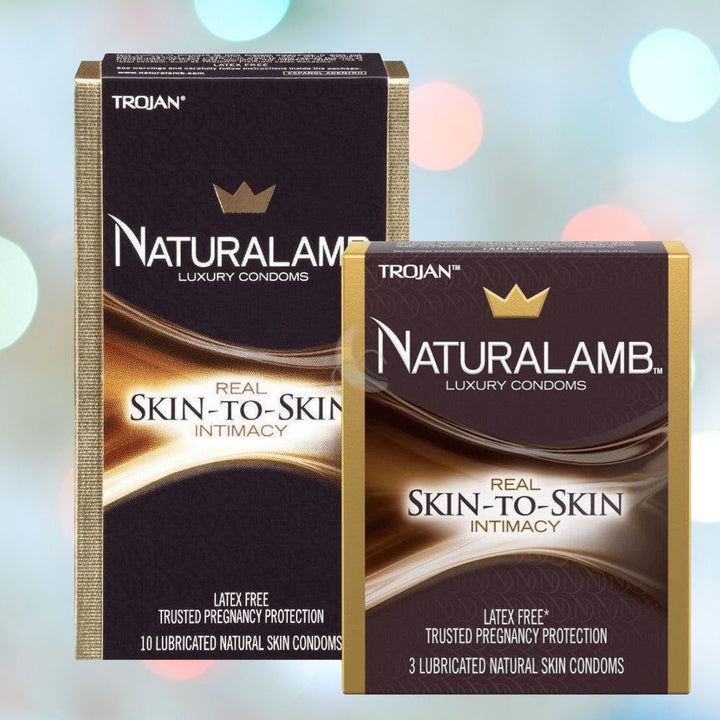
$11.99
$14.99
Trojan Naturalamb Condoms TROJAN Naturalamb Luxury Condoms are ideal for the couple that desires heightened sensitivity with trusted pregnancy protection. All about Naturalamb Condoms... They're latex-free Water-based lubricant for comfort and sensitivity For pregnancy protection ONLY. Does not protect against… Read More
Which Is More Effective, Latex Or Non-Latex Condoms?
There are many things to consider When looking at latex vs. non-latex condoms.
Let’s examine the most important things first.
What Type of Condom Is Best At Preventing Pregnancy?
When used well, latex condoms are 98% effective. Of course, it’s challenging to get things right all of the time.
When you factor in human error, latex condoms are 85% effective. This means 15 out of 100 people get pregnant from latex condoms each year.
This is likely because the condom has expired or ripped.
Non-latex condoms are slightly less effective than latex condoms – 95%, to be exact.
These three extra percentage points aren’t enough to deter many people.
Considering that the non-latex condoms break tendency is higher than the average latex condom, it’s good to have a backup birth control plan.

What Type of Condom Is Most Effective against STDs?
If you’re worried about transmitting an STD or STI, opt for a condom of latex, polyisoprene, or polyurethane.
These materials create substantial barriers against common diseases like HIV, chlamydia, and gonorrhea.
Lambskin condoms, on the other hand, aren’t as effective against STIs. Due to the tiny pores, lambskin allows many bacteria to pass through.
It’s important to remember that condoms only protect against some STIs. Many, like herpes and genital warts, spread from skin-to-skin contact.
What Type of Condom Is The Most Pleasurable?
Like many things, pleasure is a matter of personal preference.
Some people love latex condoms because they’re thin and flexible. And because they’re so strong, they can alleviate anxiety about condom breaking.
However, these condoms can cause rashes and irritation if you have a latex allergy.
Many people love lambskin condoms because they feel more natural than other varieties. Lambskin contains tiny pores, so they transmit heat well and increase sensitivity.
Similar to lambskin, polyurethane condoms transmit heat well and can increase pleasure.
These condoms aren’t as tight as latex varieties, so many people feel less constricted when wearing them.
Polyisoprene condoms are also popular because they feel similar to their latex counterparts. Folks with latex allergies can rest easy – you won’t get any annoying rashes with these.
However, these condoms may not work well for people who dislike tight-fitting condoms.

What Lube Can You Use With Non-Latex Condoms?
Oil-based lubricants can erode latex condoms, making them less effective.
Luckily, that’s not a problem with many non-latex condoms. If your condom is made out of polyurethane or lambskin, it’s safe to use oil and hybrid-based lubes.
Oil-based lubricants can erode polyisoprene condoms, though.
When in doubt, reach for water-based and silicone lubricants. These can be used with all types of condoms.
Recommended read: How to Choose The Right Lube for You and Your Partner
How To Find Out If You’re Allergic To Latex
It may not be noticeable right away if you have a latex allergy.
Some people have mild symptoms, such as sneezing and coughing. Others have more severe symptoms, such as difficulty breathing.
If you suspect you have a latex allergy, ask your doctor for a skin test.
A medical professional can insert a small amount of latex into your arm using a needle. If a bump appears around the insertion area, you likely have a latex allergy.

FAQs
Have more questions about latex vs. non-latex condoms? We’ve got you covered.
What is a non-latex condom?
Lambskin, polyurethane, and polyisoprene are popular non-latex condoms. If you have a latex allergy, thoroughly read the packaging before purchasing condoms.
Do Latex Condoms Feel Different From Non-Latex Condoms?
Many people think so! Lambskin and polyurethane condoms conduct a lot of heat, making sex feel more natural. Polyisoprene condoms, on the other hand, tend to feel similar to latex condoms.
Why do condoms use latex?
Because latex is so flexible and strong, it’s an excellent material for condoms. Latex condoms tend to be more effective in preventing pregnancy and STDs than non-latex options.
Do latex condoms hurt?
Some people find that latex condoms create discomfort and irritation. Often, adequate lubricant can make latex condoms feel more comfortable.
Those with latex allergies, however, will feel discomfort and irritation. In some cases, this can lead to bacterial and yeast infections.



